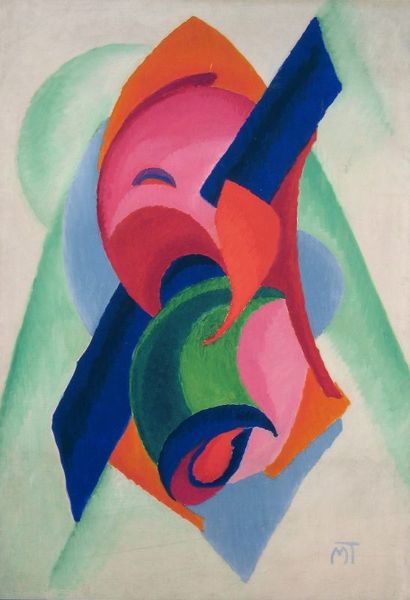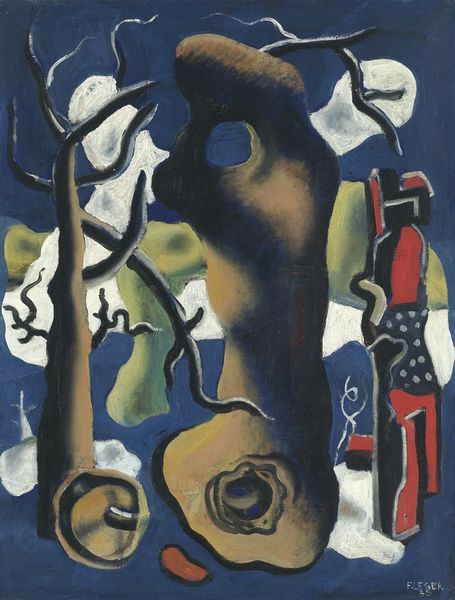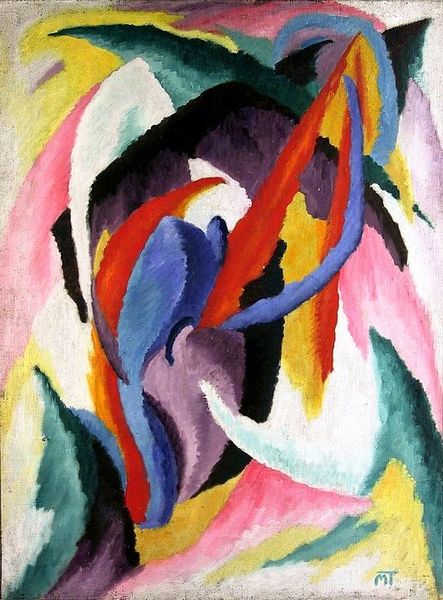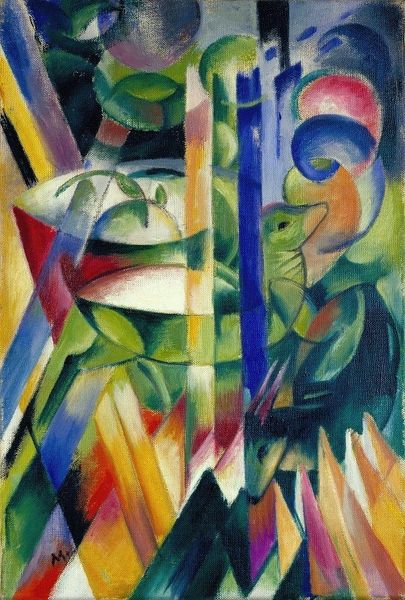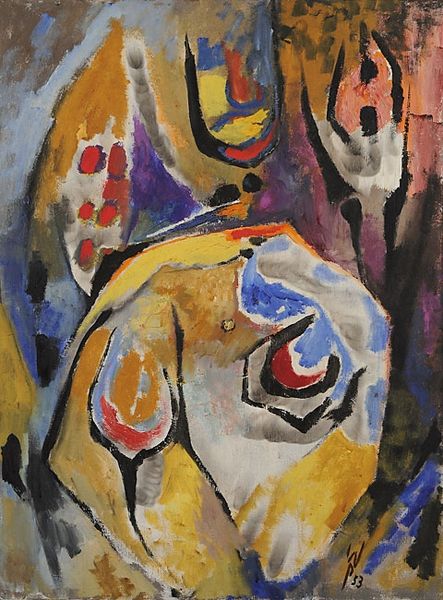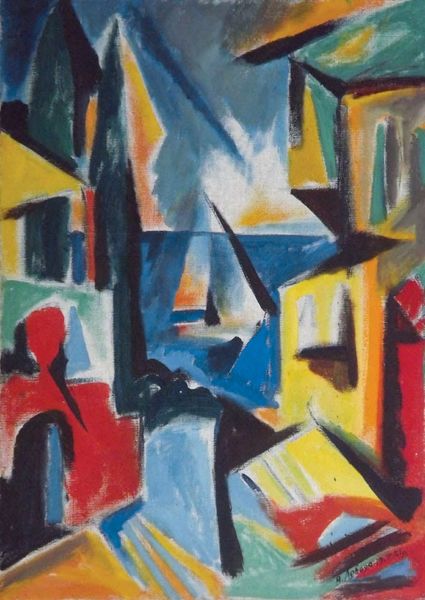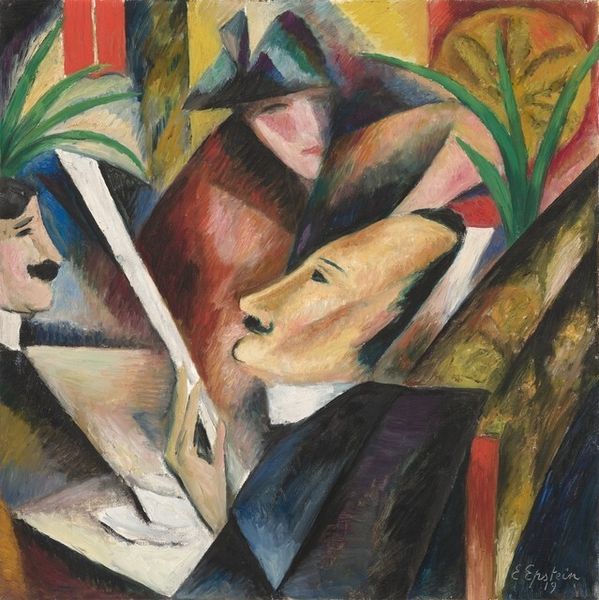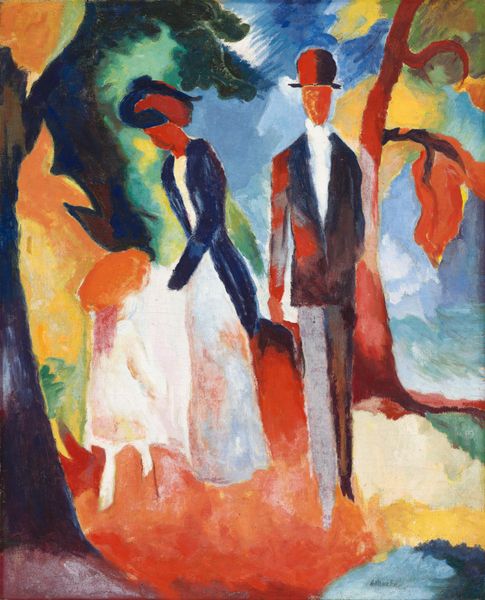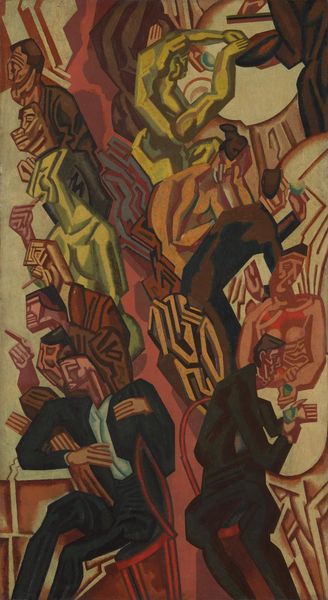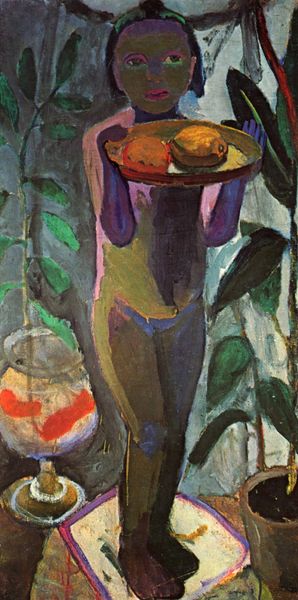
painting, oil-paint
#
portrait
#
fauvism
#
abstract painting
#
fauvism
#
painting
#
oil-paint
#
figuration
#
geometric
#
cityscape
#
portrait art
Copyright: Heinrich Campendonk,Fair Use
Curator: This is "Two Heads," an oil painting often attributed to Heinrich Campendonk, though the specific date remains unconfirmed. The work embodies a distinctive Fauvist style, a characteristic portrait that places itself somewhere between figuration and an abstract cityscape. What are your initial thoughts? Editor: Wow, okay. Chaotic, right? But in a beautiful way, like peering through a kaleidoscope of emotions. Those vibrant, almost clashing colors – reds against greens, yellows vying for attention… It’s restless, a bit unsettling, but intriguing. It makes me think of a carnival, of intense human interaction. Curator: That's an interesting read, considering the Fauvist movement itself aimed to liberate color from its descriptive function. Looking deeper, consider how the 'two heads' motif invites multiple readings—personal, political, perhaps even spiritual dualities relevant during the early 20th century, a period marked by massive social upheaval. Editor: Exactly! The figures are positioned almost superimposed on top of each other but gazing in the same direction, it speaks to interconnectedness but also individual experience—we see the world differently, shaped by separate contexts, separate heads—but that doesn't preclude common purpose or destiny. It reminds me of two people trying to navigate through history... perhaps struggling with each other on how to navigate the same context. Curator: And those bold lines and flattened perspective work against traditional portraiture, refusing to create realistic space or likeness. The human merges into a natural and built environment. Note how these visual decisions were also very intentional departures from academic traditions tied to oppressive social hierarchies. Artists challenged visual conventions to reflect or inspire a change in broader society. Editor: You're right! The geometry pulls the composition together... but it all makes me wonder. Does the lizard have a story? Is that a building, a landscape, or just abstracted foliage in the background? The open narrative sparks creativity. In art—or, rather, life—we construct our narratives and imbue it with unique perspective that's shaped by context and emotions... and it’s not something to fear. Curator: Well said. I agree it invites this creative re-writing. Considering its stylistic nods and possible symbolic undertones in our current socio-political reality might give the painting a certain…urgency. Editor: Absolutely. I walk away wanting to buy more paint.
Comments
No comments
Be the first to comment and join the conversation on the ultimate creative platform.
